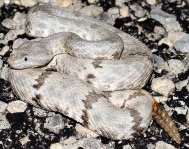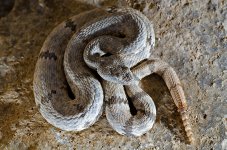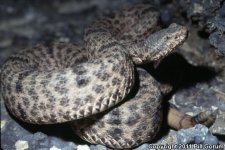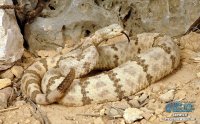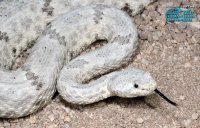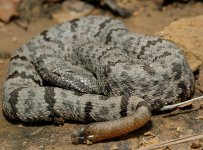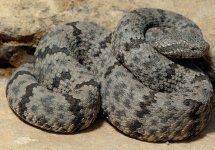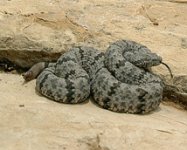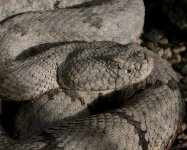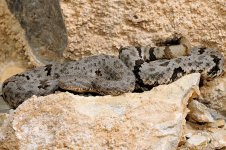Click on a picture to see a larger version in a different window
| Range: |
 |
| Other Names: |
blue rattlesnake, eastern rock rattlesnake, green rattlesnake, little green rattlesnake, pink rattlesnake, rock rattlesnake, Texas rock rattlesnake, and white rattlesnake. |
| Description: |
Small pit viper occurs in a variety of background colors ranging from pale gray to bluish gray, some shade of brown or tan, or even pinkish. Dorsal pattern consists of widely separated narrow, dark, serrated crossbands. Has mottling throughout. Adults are usually less than two feet but have been measured as long as 30.5 inches |
| Venom: |
Their venom is primarily a haemotoxin, but has been known to have significant neurotoxic effects, as well. While not type-specific, the polyvalent antivenin CroFab is generally used to treat serious envenomations. |
| Habitat: |
A snake that frequents rocky terrain, large rock outcroppings, rocky stream beds, and steep rocky talus slopes in evergreen woodland and montane conifer forests. Basks in open rocky areas in forests near permanent and intermittent springs or streams. |
| Behavior: |
Chiefly diurnal but can be active night in warmer months. Young snakes with yellow tail tips may use them to attract prey. |
| Hibernation: |
Over-winters in deep cracks during the cool months. |
| Reproduction: |
Live bearers, babies have a bright yellow or orange tail tip. |
| Diet: |
Young may feeds on insects, Adults eat mice, frogs, lizards, and birds |
Sources:





|
